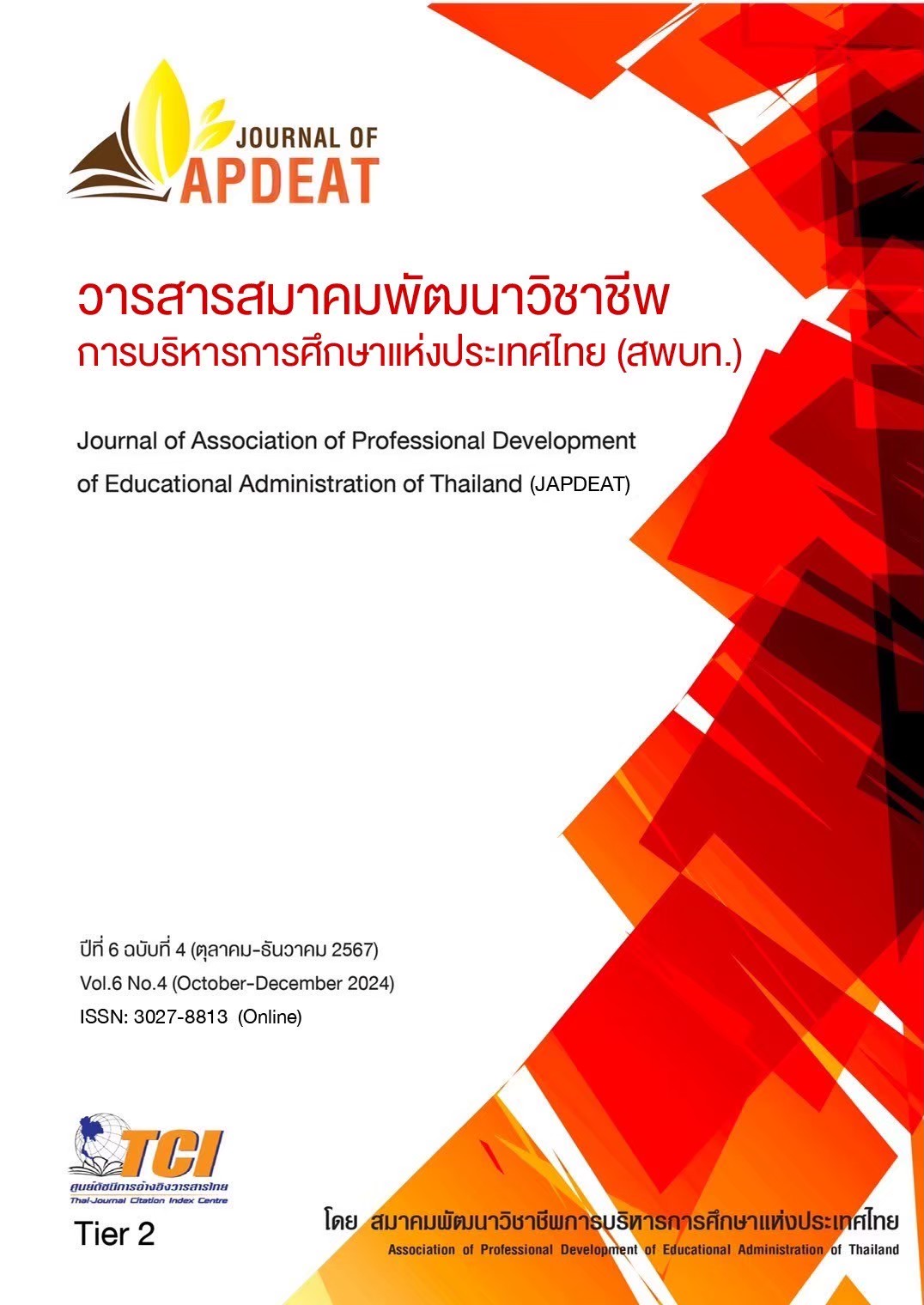Guidelines for the Development of Policy Implementation in Educational in school Nakhon Ratchasima Primary Educational Service Area office 6
Main Article Content
Abstract
This research aimed to study and compare policy implementation (turning policy into practice) in educational institutions, classified by work experience and developing guidelines for policy implementation in educational institutions under the supervision of Nakhon Ratchasima Primary Educational Service Area Office, Region 6. The research was conducted on the basis of a mixed method research design. The sample consisted of 123 school administrators and 5 target people, selected by simple random sampling with a lottery method. The sample size was determined by Krejcie and Morgan Table. The research instruments were a questionnaire and an interview. Statistics in the research were frequency, percentage, mean (x), and standard deviation (S.D.)
The findings from the study revealed that 1. Overall policy implementation was at a high level. 2. The comparison results of overall policy implementation in educational institutions, classified by work experience, were different with the statistical significance level of 0.05. 3. Developing guidelines for policy implementation in educational institutions comprised studying the policies thoroughly and making understanding. The policies were formulated by the government, the Ministry of Education policy, and Office of Basic Education Commission. A guideline was mutually set and a joint meeting was held. A wide range of opinions were given and listened to. School administrators need to have positive attitudes towards the policies. Organizational analysis was performed. A committee was appointed to make a plan. Understanding was given to documents and manuals for the operations. How to use the manuals was transferred to ensure everyone understands the same thing and works together as a team. Communication was provided and good attitude was created. Understanding was created and workers were motivated to accept. An effective work calendar was determined and monitored periodically. When workers started working, supervision and visit were given to see if there were any problems or obstacles so that the problems could be solved and advice was given. Actions were promoted to ensure the operations were progressive and in accordance with the work plan.
Article Details
References
คณิต ธัญญะภูมิ. (2560) รูปแบบการนำนโยบายการวิจัยเพื่อพัฒนาการเรียนรู้สู่การปฏิบัติในสถานศึกษาขั้นพื้นฐาน. วารสารศึกษาศาสตร์ มหาวิทยาลัยมหาสารคาม, 11(3), 36-47
ณัฐธิดา เอื้อประเสริฐ. (2562) การนำนโยบายการผลิตและพัฒนาคุณภาพกำลังคนอาชีวศึกษาไปปฏิบัติ กรณีศึกษา : สถาบันการอาชีวศึกษากรุงเทพมหานคร. วารสารการบริหารปกครอง, 8(2), 256- 284
ปฏิมา พูนทรัพย์, วิสุทธิ์ วิจิตรพัชราภรณ์, อัจฉรา นิยมาภา และรังสรรค์ มณีเล็ก. (2561). แนวทางการนำ นโยบายการปฏิรูปการเรียนการสอนภาษาอังกฤษสู่การปฏิบัติในโรงเรียนมาตรฐานสากล. สักทอง: วารสารมนุษยศาสตร์และสังคมศาสตร์, 24(3), 75-86
สำนักงานเขตพื้นที่การศึกษาประถมศึกษานครราชสีมา เขต 6. (2566). รายงานผลการดำเนินงานตามแผนปฏิบัติการ ประจำปีงบประมาณ 2566. นครราชสีมา: สพป.นครราชสีมา เขต 6.
สำนักงานคณะกรรมการการศึกษาขั้นพื้นฐาน (2565). รายงานรายงานการศึกษาและพัฒนารูปแบบการขับเคลื่อนการนำนโยบายไปสู่การปฏิบัติของสำนักงานเขตพื้นที่การศึกษา ประจำปีงบประมาณ พ.ศ. 2565. กรุงเทพฯ: สำนักงานคณะกรรมการการศึกษาขั้นพื้นฐาน
Baker, B.S.H. (1994). Strategic information management: Challenges and strategies in managing information systems. Oxford: Butterworth Heinemann.
Hill, M., & Hupe, P. (2014). Implementing public policy: An introduction to the study of operational governance. (3rd ed.). London: Sage SAGE Publications
Krejcie, R. V., & Morgan, D. W. (1970). Determining sample size for research activities. Educational and Psychological Measurement, 30(3), p. 608.

